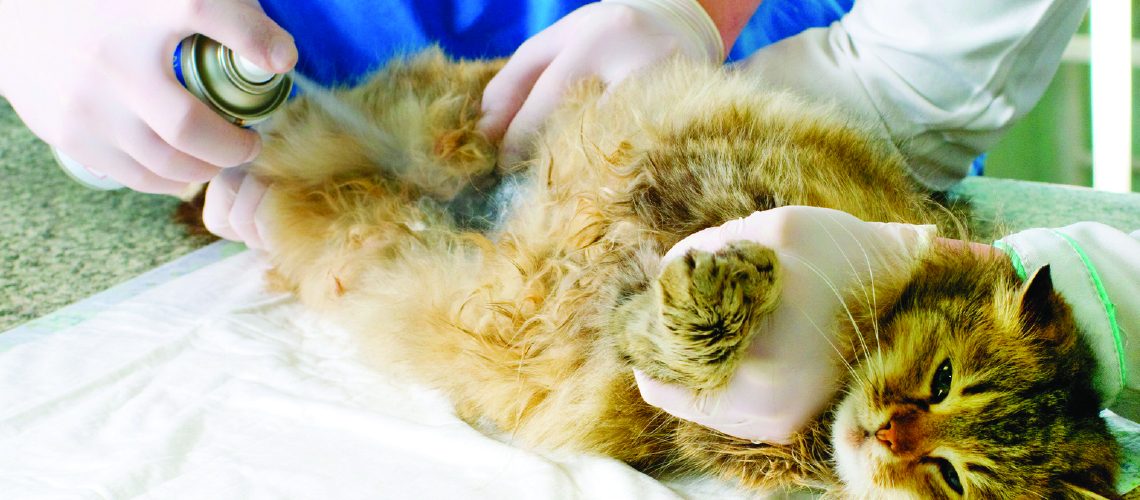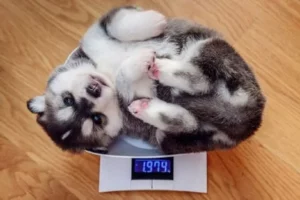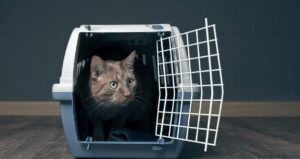Feline lower urinary tract disease (FLUTD) refers to a group of disorders that affect the cat’s bladder and urethra. Bladder stones and urinary tract infections are also rare cases, bladder cancer is an instance of these disorders, leading the urethra to become clogged or preventing the bladder from entirely emptying. If untreated, this can be lethal. FLUTD can affect cats of any age, it is more common in middle-aged, overweight cats who receive little activity, use an indoor litter box, have little or no outdoor access, or eat a dry diet. Emotional or environmental stress, multi-cat households, and abrupt changes in daily routine can all raise a cat’s risk of developing FLUTD.
FLUTD in cats is characterized by difficulty and pain when urinating, increased frequency of urination, and blood in the urine. Cats with FLUTD lick themselves excessively and may urinate outside the litter box, frequently on cool, smooth surfaces such as a tile floor or a bathtub.
Clinical Symptoms of feline urinary tract disease
Cat urinating outside the litter box is the most prevalent sign of FLUTD (inappropriate urination). Inappropriate urinating is common on clothing, bedding, and rugs.
The following are the major symptoms of Feline Lower Urinary Tract Disease:
- Straining to urinate and Urinary tract injury or malignancy
- Abnormalities during conception
- Abdomen that is hard or distended
- Urine that is cloudy or bloody
- Increasing water consumption
- Lethargy
- Vomiting
- Shrieking while urinating or urinating outside the litter box
- Excessive genital licking or urine containing blood
Cats with a urethral obstruction (a blockage in the urethra, which is the tube that transports urine from the bladder to the outside of the body) can exhibit these symptoms as well but will discharge little or no urine. Because of their longer, narrower urethra, male cats are more prone to urethral blockage than female cats. A urethral blockage is a medical emergency that necessitates immediate veterinarian care.
Can FLUTD affect cats of different breeds?
FLUTD is one of the more frequent disorders encountered in cats, affecting approximately 1-3% of them each year. FLUTD can afflict cats of any age, breed, or gender due to the heterogeneous nature of the underlying causes, although the condition is more common in:
- Cats in their forties
- Neutered cats
- Obese Cats
- Cats who get little activity
- Cats with little or no outside exposure
- Cats on a dry diet
In cats, what factors or causes contribute to urinary tract disease?
FLUTD can have multiple causes, making it a complex illness to diagnose and treat. Stones, crystals, or debris may accumulate in the urethra or bladder (the tube that connects the bladder to the exterior of your cat’s body). Some of the most common causes are:
Urolithiasis (Urinary Stones)
The growth of urinary stones, also known as uroliths, in the bladder and urethra is one suspected cause of FLUTD. These are mineral deposits that occur in the urinary tract of cats. Urinary stones are frequently diagnosed via X-rays or ultrasonography. Calcium oxalate and struvite are the most prevalent uroliths (magnesium ammonium phosphate) and (calcium oxalate). These two forms of stones account for 80-90% of urolithiasis occurrences, however, others can occur. Urolithiasis accounts for around 10-15% of FLUTD cases.
The causes of stone formation that is not caused by illness are thought to be a combination of food and genetics, but while struvite stones can be dissolved with a special diet, calcium oxalate stones can only be removed surgically. If the diet fails or the stones reappear, surgery for struvite stones may be required. In female cats, a vet may be able to help a cat release stones by flushing its bladder with sterile fluids or removing small stones straight from the bladder while the cat is under anesthesia using a cystoscope. Post-surgery, your veterinarian may recommend medication or dietary adjustments to assist avoid recurrence.
Urethral Obstruction
When a cat’s urethra gets partially or completely obstructed, this is the most serious condition linked with urine function. The cats urinate with difficulty and generate little or no urine. The cat can be constipated and straining to pass stool, but straining in the litter box is more frequently a sign of urethral obstruction. Urethral blockage is a potentially fatal disorder caused by urethral stones or urethral plugs (the latter are made of a soft material containing minerals, cells, and mucus-like protein).
Male cats are more likely than females to have urethral blockage because their urethra is longer and narrower. This is a true medical emergency, and any cat suspected of having it should seek immediate veterinarian care. When the urethra gets fully clogged, the kidneys are no longer able to eliminate toxins from the blood or maintain fluid and electrolyte balance in the body. Without treatment, mortality happens frequently when these imbalances progress to cardiac failure – often in less than 24 to 48 hours.
The obstruction must be dislodged, normally performed by flushing a sterile solution through a thin tube put into the urethra. Following the removal of the obstruction, continued therapy is dependent on the cat’s condition. Intravenous fluid treatment is used to treat dehydration and electrolyte abnormalities. Antibiotics may be used to prevent or cure an infection, and medications that help restore bladder function may also be prescribed.
A perineal urethrostomy is a surgical procedure for cats with urethral blockage despite medication treatment. Because the risks of this operation include bleeding, narrowing at the surgical site, urine incontinence, and an increased risk of urinary tract infection, it is normally reserved as a last resort.
Feline Idiopathic Cystitis
It is the most common diagnosis of lower urinary tract illness in cats under the age of ten. The condition is not entirely understood and may affect other body systems besides the urinary system. FIC is exactly as dangerous as other types of FLUTD and can induce urethral blockage in male cats.
Feline idiopathic cystitis is an exclusion diagnosis, which means that it is determined after all other diseases that could produce identical symptoms have been ruled out. FIC does not have a specific diagnostic test. FIC risk might be increased by stress and dietary changes. The main goals of FIC treatment for cats are to reduce the severity and frequency of episodes. There are several medicinal therapies with varying degrees of efficacy, but the veterinarian will usually begin by treating any behavioral issues. This could include solely providing canned food and reducing stress.
FLUTD can be difficult to detect due to its numerous origins. Based on your cat’s symptoms, your veterinarian will perform a physical examination and, most likely, a urinalysis to test urine pH and concentration, as well as the presence of crystals, bleeding, inflammation, and infection.
How Do Vets Diagnosis FLUTD?
A blood sample may be taken by your veterinarian to check for systemic infection, diabetes, and kidney disease. These illnesses may have symptoms similar to FLUTD. X-rays can normally detect stones in the bladder or urethra, but clinicians who have access to ultrasonography may opt to use it to look for kidney alterations or bladder abnormalities that x-rays cannot identify. Advanced imaging techniques, such as MRI or CT, are rarely used.
What can be done to prevent feline lower urinary tract disease?
Though symptoms may heal within days, FLUTD is known to recur, thus active management will be a lifelong commitment. To assist to decrease the possibility of recurrence:
- Feed modest meals regularly to help lessen the possibility of recurrence.
- Consult your veterinarian about the optimum diet for your cat. Many commercial diets are okay, however, specialized diets are better for specific urinary problems. Canned food is a possibility.
- Always provide clean, fresh water.
- Some urinary problems necessitate the use of specific diets.
- Reduce stress in your cat’s habitat by minimizing changes.
- Medications should only be administered on a long-term basis in severe circumstances.




